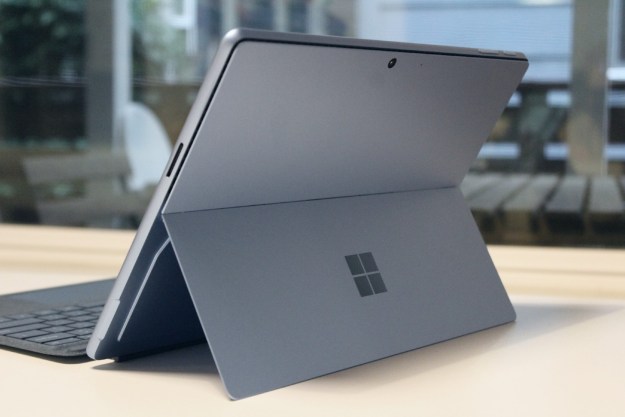After seemingly endless delays, Dying Light 2 is here. Although the game doesn’t fully live up to expectations, it’s still a true next-gen experience. To optimize your gameplay, I rounded up the best settings for Dying Light 2, as well as looked at the performance you can expect with ray tracing and upscaling.
The game’s massive open world is demanding on even the latest hardware, so you’ll need a beefy PC to run Dying Light 2 with
The best settings for Dying Light 2

Dying Light 2 doesn’t have a lot of graphics options, offering a nice change of pace from the stuffed menus in titles like Call of Duty: Vanguard. Those few settings offer a lot of bandwidth, though. After testing each of the settings and tweaking the biggest losers, I was able to increase my frame rate by nearly 33%.
Here are the best graphics settings for Dying Light 2:
- Render mode: D3D12
- Anti-aliasing: High
- Motion blur: Off
- Particle quality: Low
- Contact shadows: High
- Ambient occlusion: Low
- Global illumination: Medium
- Refection quality: Low
- Fog quality: Medium
- Sun shadows: PCF
I ignored
For easy wins, change the render mode to DirectX 12 and bump reflection quality down to low. Simply switching to DirectX 12 brought back an extra frame, while reflection quality brought nearly a 13% increase in my average frame rate. Reflections are important, render mode is the most demanding setting based on my testing.

The other important settings are ambient occlusion and fog quality, which both brought about a 10% increase in average frame rate. I left fog quality at medium because the low setting really tarnishes the atmosphere. I was content to turn ambient occlusion down to low because the visual change isn’t as stark.
I wouldn’t recommend turning ambient occlusion off. The game looks much flatter, and there isn’t a big difference in performance between the low setting and turning off ambient occlusion entirely.
The other interesting note is motion blur. I always turn motion blur off, and I recommend you do so in Dying Light 2. Turning off motion blur not only looks a lot better, but it can also increase your frame rate by around 8%. If you need motion blur, leave the setting at low.
Dying Light 2 system requirements

Like Back 4 Blood and a number of other games released over the past year, Dying Light 2 has five different lists of system requirements. At minimum, you’ll need a GTX 1050 Ti, and if you want
All of the three
For the other system requirements, most of them check out. A decent quad-core from the past few generations will get you by, though a six-core CPU is ideal. Techland recommends the eight-core Ryzen 7 3700X for the top spec, but a six-core chip like the Ryzen 5 5600X will work just as well.
For
Dying Light 2 performance, tested
Enough with settings and system requirements — let’s talk performance! It’s rare to find games that feel next-gen on PC, but Dying Light 2 fits the bill. It can run on the hardware of today, but it’s built for the hardware of the future, especially if you want all of the visual bells and whistles.
| RTX 3070 | RTX 2060 Super | RX 580 | |
| 1080p Ultra | 103 fps | 61 fps | 39 fps |
| 1080p Recommended | 127 fps | 82 fps | 46 fps |
| 1440p Ultra | 75 fps | 43 fps | 26 fps |
| 1440p Recommended | 93 fps | 59 fps | 32 fps |
| 4K Ultra | 40 fps | 22 fps | N/A |
| 4K Recommended | 53 fps | 32 fps | N/A |
As I typically do with PC performance guides, I grabbed three
With the RTX 3070, I couldn’t manage native

Bumping down to 1440p was much more forgiving, which isn’t surprising, as 1440p is still the sweet spot for native resolution. With recommended settings, the RTX 2060 Super manages nearly 60 fps at native 1440p, and the RTX 3070 nears 100 fps. But 1440p is the baseline for Dying Light 2, with native
The RX 580 shows its age in a big way in Dying Light 2. I wasn’t anywhere close to 60 fps at 1080p, even with recommended settings. That’s not a good sign for budget gamers, especially considering the underpowered RX 6500 XT. There are upscaling options, but as I’ll dig into later, they sacrifice a lot of image quality at lower resolutions.
Ray tracing performance in Dying Light 2

| RTX 3070 | RX 6700 XT | |
| Ray tracing | 40 fps | 21 fps |
| High quality ray tracing | 30 fps | 13 fps |
I originally tested
You don’t want to turn on
For native resolution, you can see just how far back the RX 6700 XT is compared to the RTX 3070. It’s no secret that AMD’s most recent

You can see in the comparison above how much depth
DLSS, FSR, and upscaling in Dying Light 2
Dying Light 2 includes three upscaling options: DLSS, AMD’s FidelityFX Super Resolution (FSR), and an in-game upscaling tool. DLSS is only available on RTX 30- and 20-series
I normally test upscaling by reaching for an aspirational scenario —
| RTX 3070 (4K) | RTX 2060 Super (1440p) | RX 580 (1080p) | |
| DLSS Balanced | 64 fps | 68 fps | N/A |
| FSR Balanced | 79 fps | 75 fps | 60 fps |
| Linear Balanced | 82 fps | 79 fps | 61 fps |
| DLSS Balanced (with RT) | 34 fps | 32 fps | N/A |
| FSR Balanced (with RT) | 37 fps | 34 fps | N/A |
| Linear Balanced (with RT) | 38 fps | 35 fps | N/A |
All three offer a significant uplift in performance. Without
You wouldn’t know that from the image quality. You can see the three upscaling modes stacked up in the image below. DLSS is on the left, FSR is in the middle, and the in-game upscaling is on the right.

Despite working with a lower resolution, DLSS maintains a lot more detail. You can see that clearly in the distant trees, as well as up close on the train car. FSR and the in-game upscaler offer larger performance improvements, but they don’t look nearly as good as DLSS.
For image quality, they stack up how you’d expect: DLSS looks the best, and the in-game upscaler looks the worst. However, FSR and the built-in upscaler are remarkably close. The upscaler is softer with objects close to the camera, but the difference isn’t big. And the built-in upscaler offers the biggest performance improvement across the board.
Most players will only have the option between FSR and the built-in upscaling tool. FSR is the better option in most cases, unless you’re trying to play the game at
The main issue is when you bump down the resolution. If you’re upscaling to 1080p, for example, the image will look much worse overall. That’s the nature of upscaling, unfortunately, and general-purpose solutions like FSR and linear upscaling can’t reconstruct a low resolution scene like DLSS can.
Editors' Recommendations
- Ray tracing vs. path tracing — which is the best dynamic lighting technique?
- Best gaming PC deals: Lenovo Legion, ASUS ROG, Acer Predator
- Fortnite performance guide: best settings, fps boost, and more
- The 5 best PC cases for airflow in 2024
- Best 2-in-1 laptop deals: Turn your laptop into a tablet for $315




